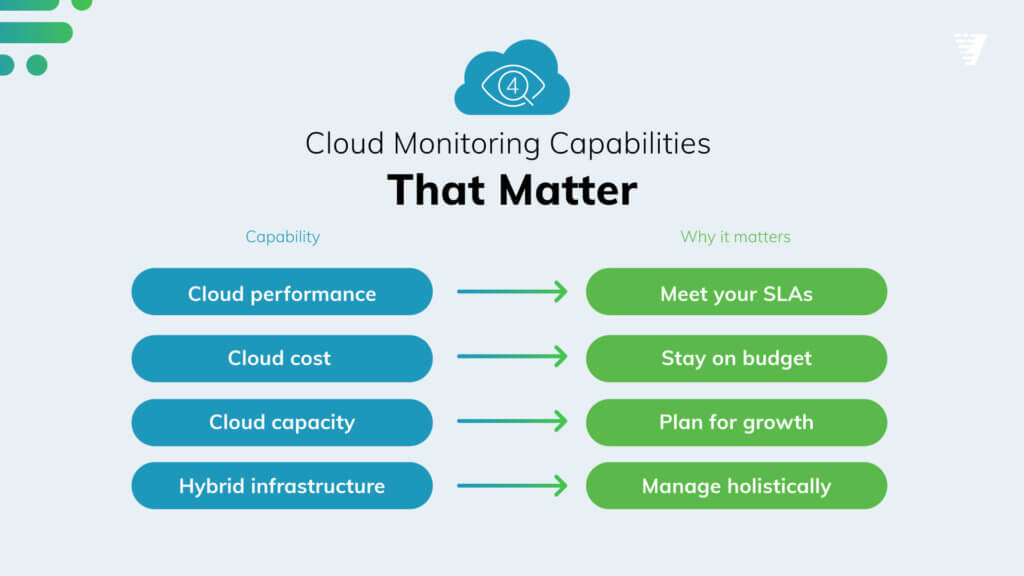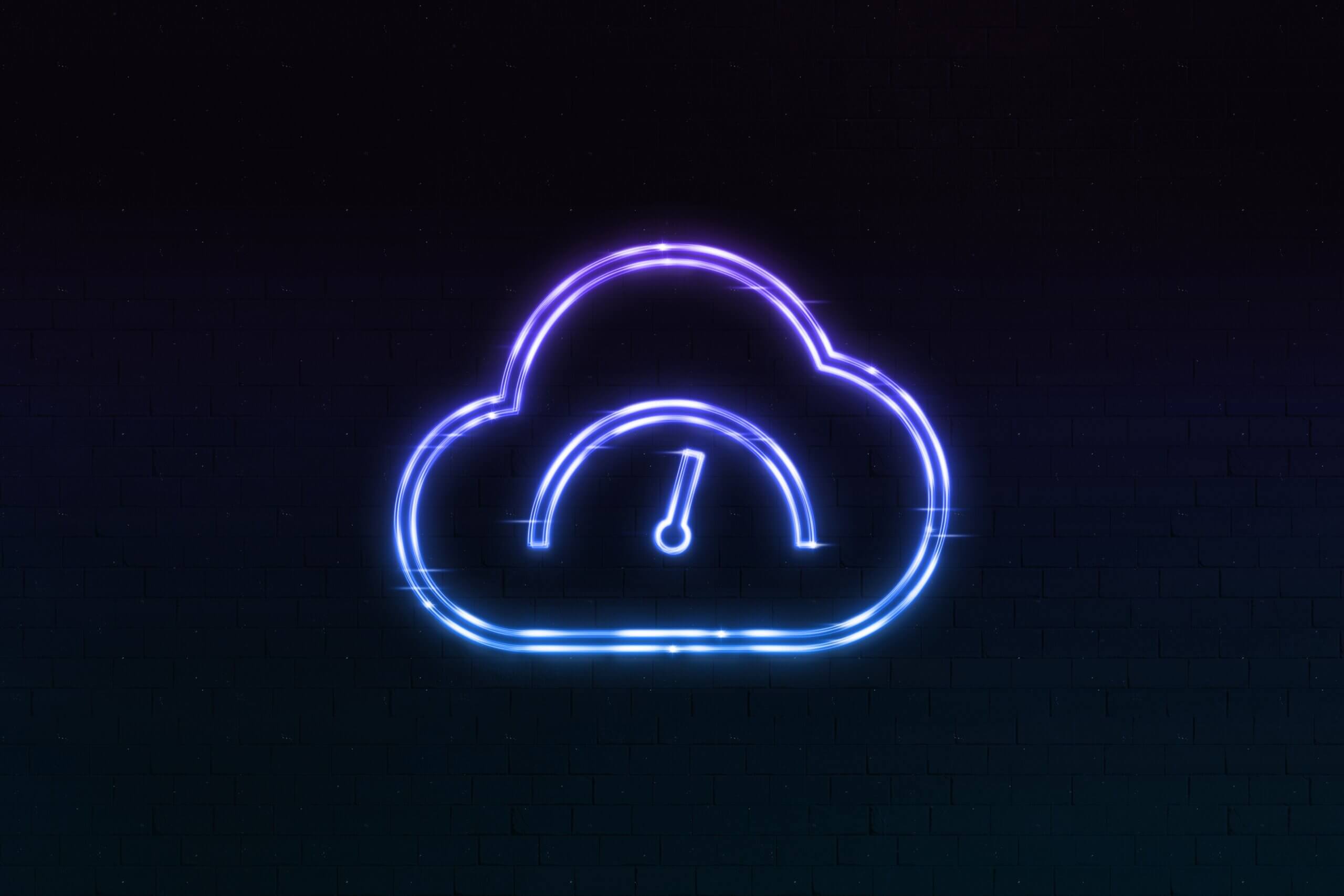Why Cloud Monitoring Is Crucial
With nearly every organization moving at least some portion of their infrastructure into the cloud, the value is well understood—we’re not going to re-hash those umpteen benefits here. But when you migrate, you cede some control. That’s by design and it’s not inherently bad. It does, however, mean that you need to keep an eye on those deployments to make sure you’re getting the performance and benefits you expect. And you need to watch it over time as things evolve. This includes both changes on your side—new or updated applications, increased demand, etc.—as well as new features from your cloud provider(s).
Monitoring simply means that you’re observing and reviewing the progress or quality of something over a period of time. When it comes to modern applications and infrastructure—and especially with cloud environments in the mix—you need monitoring that:
- Provides real-time visibility as well as allows for historical analysis
- Delivers information via configurable, easy-to-read, easy-to-share dashboards and reports
- Uses machine learning and AI for advanced analytics
- Provides alerts and notifications when thresholds are exceeded
But this list alone doesn’t suffice. To keep your cloud deployment optimized over time, you need to have the right visibility in four key areas.
4 Cloud Monitoring Capabilities That Matter

#1. Cloud Performance Monitoring—So you meet your SLAs
Your users, be they customers or employees, expect your applications to be available and fast. You may even have codified SLAs that guarantee a minimum level of performance. Make no mistake: Poor application performance comes with a high cost. It impedes employee productivity and/or creates a bad customer experience, both of which can drag down business performance and hurt your reputation. And if you have formal SLAs in place, you’ll have to issue credits or even shell out for penalties. Best-in-class cloud performance monitoring delivers instant visibility and enables you to anticipate and address potential bottlenecks before your end users start to feel the pain. You need to track your specific key metrics; view, filter, group, and share them based on your organization’s needs and workflows. Machine learning should allow you to detect and visualize shifts that signal changes to how metrics influence trends. Additionally you want to look for features, such as multiple conditional alerting, so you can detect real operational problems without a lot of extra noise.
#2. Cloud Cost Monitoring—So you stay within your budget
One of the big benefits of the cloud is that you only pay for what you use. Yet one of the biggest challenges business struggle with is that you pay for what you actually use…which, if you’re not paying very close attention, could end up being much more than you bargained for. Even worse, you could end up paying for commitments that you don’t even need. This kind of cloud waste is, unfortunately, rampant. Our experience here at Virtana is that on average, 32% of organizations’ cloud spend is wasted. Gartner estimates worldwide IaaS cloud spend will be a little over $50 billion in 2020. If one-third of that is wasted, it means companies are unnecessarily paying a mind-blowing $16 billion. To avoid this, you need to monitor cloud costs—with alerts to notify you when conditions you specify are breached—so you catch sudden fluctuations in spend before they affect your bottom line and better plan future purchases. To do this, you’ll need visibility into all your cloud costs, both at a glance and with the ability to dig into detailed breakdowns by service, attribute, time, percentage change over time, and more. You also need to be able to find unused resources that are costing you money, and advanced analytics should offer you recommendations to avoid overbuying reservations.
#3. Cloud Capacity Monitoring—So you can plan for growth
Keeping your cloud environment rightsized on an ongoing basis—as your workloads and demand evolve or as providers offer new services—requires continued vigilance. You need to be able to visualize actual vs. ideal configurations. You want to scope virtual machine instances based on your requirements and risk tolerance as well as your specific target utilization levels or other custom factors to set preferences. Given that proposals can be complicated, you need a way to easily sort options, show projected savings, and compute future CPU and memory requirements so you make the best decisions for the long term. This requires advanced analytics that look beyond compute instances to database, storage, and serverless for the workloads of all your cloud services.
#4. Hybrid Infrastructure Monitoring—So you can manage your environment holistically
While virtually every business today has some of its applications and infrastructure in the cloud, very few have it all in the cloud. In fact, a recent survey by IDG found only 9% of organizations are all cloud today, and that number will only rise to 16% within 18 months. This means that one of the most important cloud monitoring capabilities is monitoring what’s not in the cloud. There are any number of reasons to keep certain applications or components on-premises, but in all cases, you need to be able to view and analyze your entire environment—across public and private clouds as well as on-premises deployments—as a holistic ecosystem.
Virtana: Your Cloud Monitoring Partner
With Virtana’s cloud and hybrid infrastructure monitoring solutions, you can take control and assure performance. Try it for free

David McNerney
Director of Product Management for Container Observability




